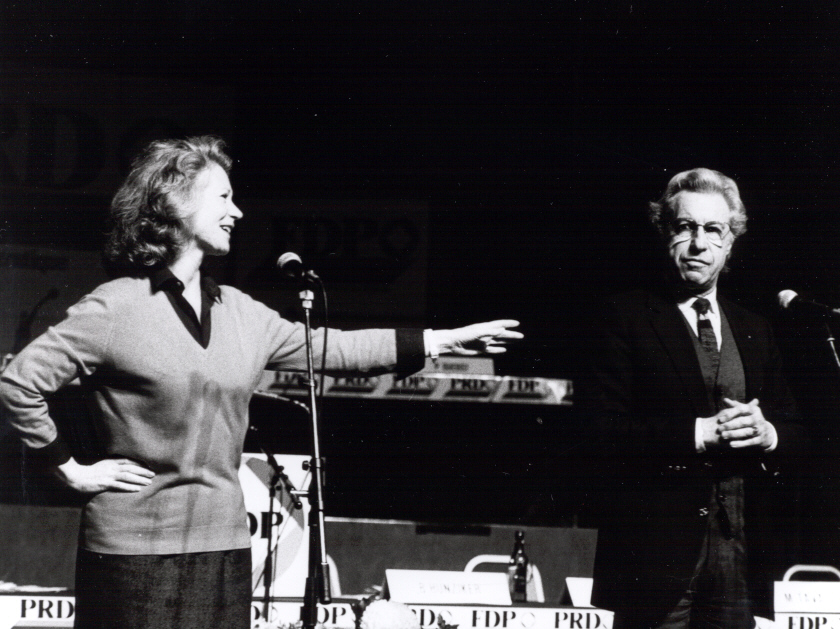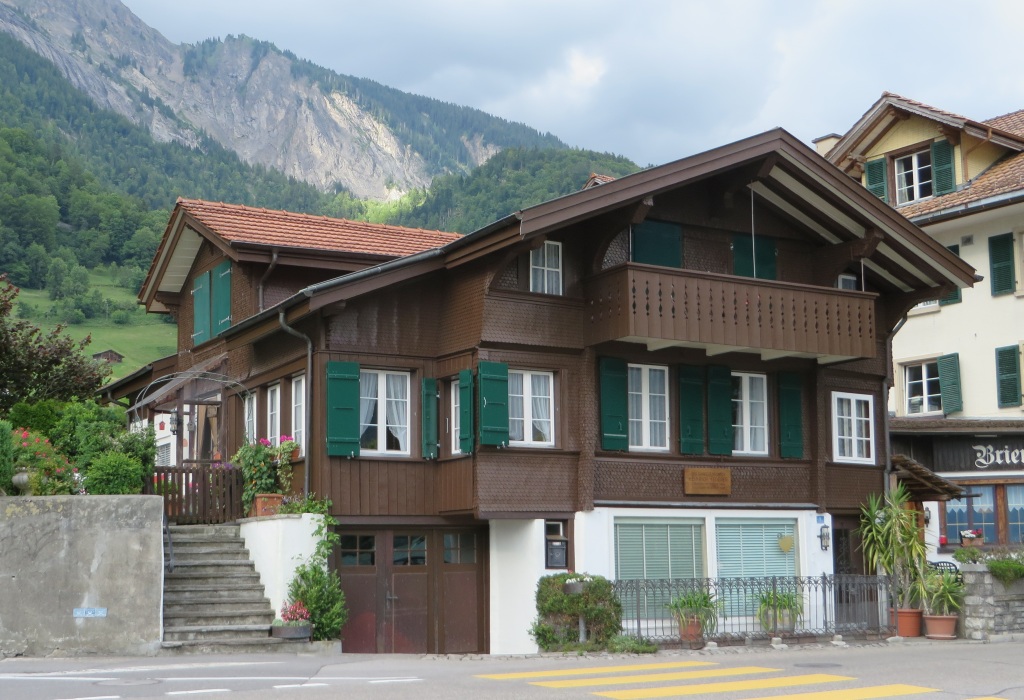|
Zürich-Weinegg
Weinegg is a quarter in District 8 of Zürich. Geography and demographics Weinegg was formerly a part of Riesbach municipality, which was incorporated into Zürich in 1893. The quarter has a population of 4,951 distributed on an area of 1.72 km². Enzenbühl and Rehalp cemeteries In 1902 ''Enzenbühl'' was, after the old ''Neumünster'' and ''Rehalp'' cemeteries, the third expansion phase for the growing needs of northeastern Zürich. Arnold Geiser, the city's chief engineer, designed an architecturally simple cemetery with longitudinal and transverse axes, surrounded by high, circular walls. At the highest area of the westward sloping plant, Geiser positioned there the abdication chapel that was built in the Gothic Revival style. In 1934 the cemetery grounds have been expanded to its present size. ''Friedhof Enzenbühl'', a cemetery those area is shared with the municipality of Zollikon, became the final resting place of some known respectively popular people, among them Inig ... [...More Info...] [...Related Items...] OR: [Wikipedia] [Google] [Baidu] |
Inigo Gallo
Inigo Gallo (2 November 1932 – 15 December 2000) was a Swiss comedian, radio personality, and stage and film actor starring usually in Swiss German language cinema and television and stage productions. Life and work Born in Zürich, Canton of Zürich in Switzerland, Inigo Gallo had as a child actor appearances on Schauspielhaus Zürich, among other things as ''Walterli'' in Schiller's ''Wilhelm Tell''. From 1948 to 1951 he was educated at the ''Bühnenstudio Zürich'', and in 1951/52 Gallo got guest engagements at the Schauspielhaus Zürich, and from 1952 to 1958 engagements at the ''Stadttheater St. Gallen''. In 1958 Gallo worked as a freelance director, actor and author, among others at the Stadttheater St. Gallen, ''Stadttheater Basel '' and ''Schauspielhaus'': in 1959 as ''Bunker Willy'' in '' Die kleine Niederdorf-Oper'' and in the musical "Eusi chliini Stadt" at the Theater am Hechtplatz in Zürich. Since then, Gallo worked together with Ruedi Walter in a variety of diale ... [...More Info...] [...Related Items...] OR: [Wikipedia] [Google] [Baidu] |
César Keiser
César Keiser or Hanspeter Keiser (4 April 1925 – 25 February 2007) was a Swiss cabarettist, comedian, radio personality, and stage and film actor, usually starring in Swiss German language cinema, television and stage productions. Life and work Born in Basel, Canton of Basel-Stadt in Switzerland, ''Hanspeter Keiser'' attended the gymnasium (college), and from 1940 to 1950 the teacher seminary and arts college in Basel where he worked as a professor in 1951. During World War II Keiser was drummer in various entertainment and jazz groups, among others, together with Lukas ''Cheese'' Burckhardt in his own orchestra ''César Roy''. In 1944 Keier founded the amateur theater group "Quodlibet Basel", a circle of literary and culturally interested people. In 1946 Keiser was co-founder of "Cabaret Kikeriki" in which Keiser participated as a writer and performer up to its dissolution in 1951. Then he was hired as an actor and writer for Cabaret Fédéral in Zürich, for which he had ... [...More Info...] [...Related Items...] OR: [Wikipedia] [Google] [Baidu] |
Margrit Rainer
Margrit Rainer born as Margrit Rosa Sandmeier (9 February 1914 – 10 February 1982) was a Swiss comedian, radio personality, and stage and film actress starring usually in Swiss German language cinema and television and stage productions. Early life and education Born and raised in Zürich-Oerlikon, Canton of Zürich in Switzerland, to Elise née Boller and Johannes Rudolf, ''Margrit Rosa Sandmeier'' dreamed of a circus career. Her parents forced her to make an apprenticeshipt as a photo lab assistant, but she secretly took acting classes and singing lessons. At the age of 18, she married Fritz Pfister, a Swiss actor, and they emigrated to Ibiza, where they operated a chicken farm. But the marriage broke up and she returned to Switzerland. Rainer worked as a cashier at the Zürich hotel ''Hirschen'' in 1934, the venue of the Cabaret Cornichon. Theater, film and television and children's voice actress After first appearances at the ''Schweizerisches Volkstheater'' in 1938, Rai ... [...More Info...] [...Related Items...] OR: [Wikipedia] [Google] [Baidu] |
Zollikon
Zollikon is a municipality in the district of Meilen in the canton of Zürich, Switzerland known for being one of Switzerland's most exclusive districts. Besides the main settlement of Zollikon, which lies on the shore of Lake Zürich, the municipality also includes Zollikerberg, at a higher elevation on the road from Zürich to Forch. Geography Zollikon has an area of . Of this area, 21.2% is used for agricultural purposes, while 37.7% is forested. Of the rest of the land, 40.8% is settled (buildings or roads) and the remainder (0.3%) is non-productive (rivers, glaciers or mountains). housing and buildings made up 33.3% of the total area, while transportation infrastructure made up the rest (7.5%). Of the total unproductive area, water (streams and lakes) made up 0.1% of the area. 36.5% of the total municipal area was undergoing some type of construction. Zollikon is located in the Pfannenstiel region. Zollikon is on the so-called Gold Coast of Zürich, and considered ... [...More Info...] [...Related Items...] OR: [Wikipedia] [Google] [Baidu] |
Limmat River
The Limmat is a river in Switzerland. The river commences at the outfall of Lake Zurich, in the southern part of the city of Zurich. From Zurich it flows in a northwesterly direction, after 35 km reaching the river Aare. The confluence is located north of the small town of Brugg and shortly after the mouth of the Reuss. The main towns along the Limmat Valley downstream of Zurich are Dietikon, Wettingen, and Baden. Its main tributaries are the Linth, via Lake Zurich, the Sihl, in Zurich, and the Reppisch, in Dietikon. The hydronym is first attested in the 8th century, as ''Lindimacus''. It is of Gaulish origin, from ''*lindo-'' "lake" (Welsh ''llyn'') and ''*magos'' "plain" (Welsh ''maes''), and was thus presumably in origin the name of the plain formed by the Linth. Power generation Like many Swiss rivers, the Limmat is intensively used for production of hydroelectric power: along its course of , its fall is used by no less than ten hydroelectric power stations. ... [...More Info...] [...Related Items...] OR: [Wikipedia] [Google] [Baidu] |
Lake Zurich
__NOTOC__ Lake Zurich ( Swiss German/Alemannic: ''Zürisee''; German: ''Zürichsee''; rm, Lai da Turitg) is a lake in Switzerland, extending southeast of the city of Zürich. Depending on the context, Lake Zurich or ''Zürichsee'' can be used to describe the lake as a whole, or just that part of the lake downstream of the Seedamm at Rapperswil, whilst the part upstream of Rapperswil may be called the ''Obersee'' or Upper Lake. Geography Lake Zurich is formed by the Linth river, which rises in the glaciers of the Glarus Alps and was diverted by the Escher canal (completed in 1811) into Lake Walen from where its waters are carried to the east end of Lake Zurich by means of the Linth canal (completed in 1816). The waters of the Lake of Zurich flow out of the lake at its north-west end ( Quaibrücke), passing through the city of Zürich; however, the outflow is then called the Limmat. The culminating point of the lake's drainage basin is the Tödi at 3,614 metres above sea level. ... [...More Info...] [...Related Items...] OR: [Wikipedia] [Google] [Baidu] |
Münsterhof
Münsterhof (literally: Fraumünster abbey courtyard) is a town square situated in the Lindenhof quarter in the historical center of Zürich, Switzerland. Münsterhof is the largest town square within the ''Altstadt'' (old town) of Zürich, and is surrounded by medieval buildings. The area forms part of the southern extension of the Quaianlagen promenades of Zürich's lakefront. Geography Münsterhof is located in front of the Fraumünster church, and lies a short distance from the Münsterbrücke bridge which leads eastwards across the river Limmat to the Limmatquai and Grossmünster church beyond. It is surrounded by medieval buildings, among which are several guild houses, including zur Waag, the former Kämbel guild house, and the art museum Zunfthaus zur Meisen. This area forms part of the southern extension of the '' Quaianlagen'' promenades that were built between 1881 and 1887. Münsterhof is the biggest town square within the former medieval town walls of Züric ... [...More Info...] [...Related Items...] OR: [Wikipedia] [Google] [Baidu] |
Münsterbrücke Zürich
Münsterbrücke (German for "Minster bridge"), may refer to the following structures: * Münsterbrücke, Hamelin, a bridge across the river Weser in Hamelin, Germany * Münsterbrücke, Zürich Münsterbrücke is a pedestrian and road bridge over the Limmat in the city of Zürich, Switzerland. It is listed in the Swiss inventory of cultural property of national and regional significance. It is indirectly named after two ''Münster'' (m ..., a bridge across the river Limmat in Zurich, Switzerland {{Disambig ... [...More Info...] [...Related Items...] OR: [Wikipedia] [Google] [Baidu] |
Limmatquai
''Limmatquai'' is a street in the Swiss city of Zürich. It is named after the Limmat, and it follows the right-hand (eastern) bank of that river for about through the '' Altstadt'', or historical core, of the city. The street was once important for both road and public transportation, but today sections of it form a pedestrian zone shared with Zürich's trams, effectively forming a northern extension of the '' Seeuferanlage'' promenades that ring the shores of Lake Zürich. The ''Limmatquai'' has its southern end adjacent to the '' Quaibrücke'' bridge and ''Bellevueplatz'' square, where the Limmat flows out of Lake Zürich. Its northern end is at the '' Bahnhofbrücke'' bridge and ''Central'' plaza. Between the ''Quaibrücke'' and the ''Bahnhofbrücke'', the river is crossed by four other bridges all of which connect to the ''Limmatquai''; from south to north these are the '' Münsterbrücke'', '' Rathausbrücke'', '' Rudolf-Brun-Brücke'' and '' Mühlesteg''. For most of its ... [...More Info...] [...Related Items...] OR: [Wikipedia] [Google] [Baidu] |
Technopark Zürich
Technopark Zürich is a research park known as technopark based in the municipality of Zürich in the Canton of Zürich in Switzerland. History Technopark Zürich was established in 1993. The founders planned to provide rooms, offices and other spaces for people from various branches, disciplines, universities, research institutes, start-ups and established enterprises. Organisation Technopark Zürich is managed as a privately funded foundation, and the property landlords are Swiss Life and Zürcher Kantonalbank. The foundation has two major divisions. One division is responsible for the real estate, handling all tenancy and facility management activities, including the lease of rooms for events. The other division is concerned with the actual foundation affairs ''to increase the competitiveness of the Swiss economy and to create enduring jobs''. Collaborations Technopark has numerous strategic collaborative partners to facilitate the transfer of knowledge and technology a ... [...More Info...] [...Related Items...] OR: [Wikipedia] [Google] [Baidu] |
Heinrich Federer
Heinrich Federer (6 October 1866 – 29 April 1928) was a Swiss writer and Catholic priest. Biography Federer was born on 6 October 1866 in the Bernese village of Brienz. His father, Johann Paul Federer, was a wood carver and school teacher whose family came from Berneck, St. Gallen. He attended grammar school in Sarnen from 1881 until 1887, when he went to study at a college in Schwyz. After studying Catholic theology in Eichstätt, Lucerne, and Freiburg, he was ordained as a Catholic priest in 1893 and assigned as the chaplain in Jonschwil. He retired from the priesthood in 1899 after suffering from ill health. After an asthma diagnosis in 1900, he was transferred to a women's home in Zürich to recover. While there, he worked as the editor-in-chief of the ''Neue Zürcher Nachrichten'', a Catholic newspaper. Federer had requested residence at Einsiedeln Abbey but was denied admission due to rumors of inappropriate sexual behavior. On 24 September 1902, Federer was accus ... [...More Info...] [...Related Items...] OR: [Wikipedia] [Google] [Baidu] |







